If you care for a pet, you may know all too well the struggle of keeping your pet calm and still while administering eye drops, clipping nails, cleaning ears, changing a bandage, or brushing their coat. Some pets react with mild discomfort to these activities, while others may exhibit extreme stress and defensive behaviors. So, how can we help our pets feel safer and calmer during these necessary activities? Thankfully, you certainly can work on this issue together. The result may be that your pet now actively tolerates or even enjoys nail clips, brushing, or teeth cleaning. In this guide, we’ll introduce the concept of cooperative care and how to begin with your pet.
Read on to learn more.
What Is Cooperative Care?
Cooperative care centers our pet as an active, willing participant in handling and husbandry experiences. Through teaching start cues, reading body language, using positive reinforcement, counter conditioning, classical conditioning, allowing the pet to say no whenever possible, and teaching foundational cooperative care positions, we can turn these often stressful activities into procedures in which the animal feels more confident, willing, and calm. Fear-free vets and groomers continually strive to incorporate cooperative care into their practices.
For example, your dog may feel quite afraid of having their nails trimmed. They may shake, attempt to hide or run away, squirm and flail, yelp and whimper, mouth your hand, growl, or even bite due to their fear and discomfort. Getting just one nail clipped can feel like a herculean task. With all of the chaos, the chances of accidentally cutting the part of the nail with blood supply and nerves (the quick) significantly increase.
With cooperative care, you can slowly help your dog acclimate to nail trimming. They can become an active and willing participant. Later in this article, we’ll detail the steps to help your dog feel calmer and helpful during nail trimming.
What Is Cooperative Care: Understanding the Terms
To start with cooperative care, it’s essential to understand a few terms integral to the process.
Start/Consent Cues
Start or consent cues are behaviors your pet offers when they are ready for a procedure to begin. If this behavior is not provided, it’s a sign that the animal is not prepared. They may be feeling anxious or unsure. A typical start cue in cooperative care for dogs is a chin rest. Later, we’ll detail how to teach a chin rest and turn it into a consent cue.
Positive Reinforcement
Positive reinforcement describes adding a reward immediately after a behavior to increase the likelihood of that behavior occurring again. This reinforcement is part of operant conditioning, in which we specifically ask our pet to perform a trained behavior.
Classical Conditioning
In ethical animal training, classical conditioning is the pairing of a neutral stimulus with something the animal highly values (often food) to create a positive response to that stimulus. For example, if your cat has neither negative nor positive feelings toward a brush, you can use classical conditioning to help your cat associate positive emotions with the brush.
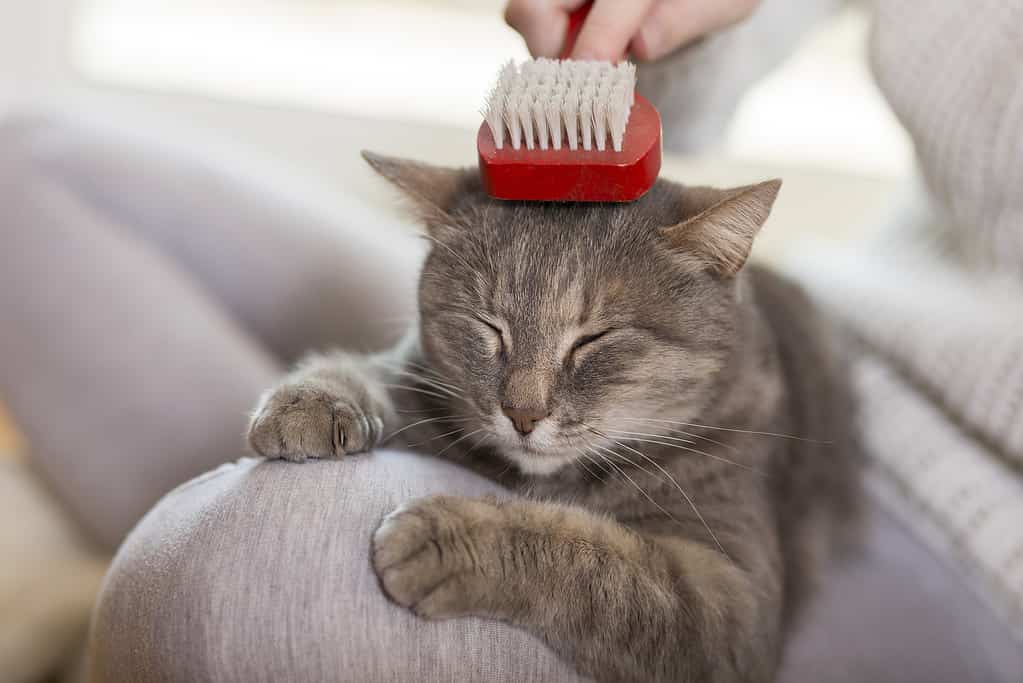
You can pair a neutrally perceived brush with tasty treats through classical conditioning to create a positive association.
©vladans/iStock via Getty Images
Counter Conditioning
In contrast with classical conditioning, counter conditioning in this context is the pairing of a negatively perceived stimulus with something highly positive (again, typically high-value food) to help the animal feel better about the stimulus. Suppose your horse takes one look at a hoof pick and tries to run in the opposite direction or gives you a displeased expression. In that case, you can use counter-conditioning to begin associating the presence of the hoof pick with positive outcomes.
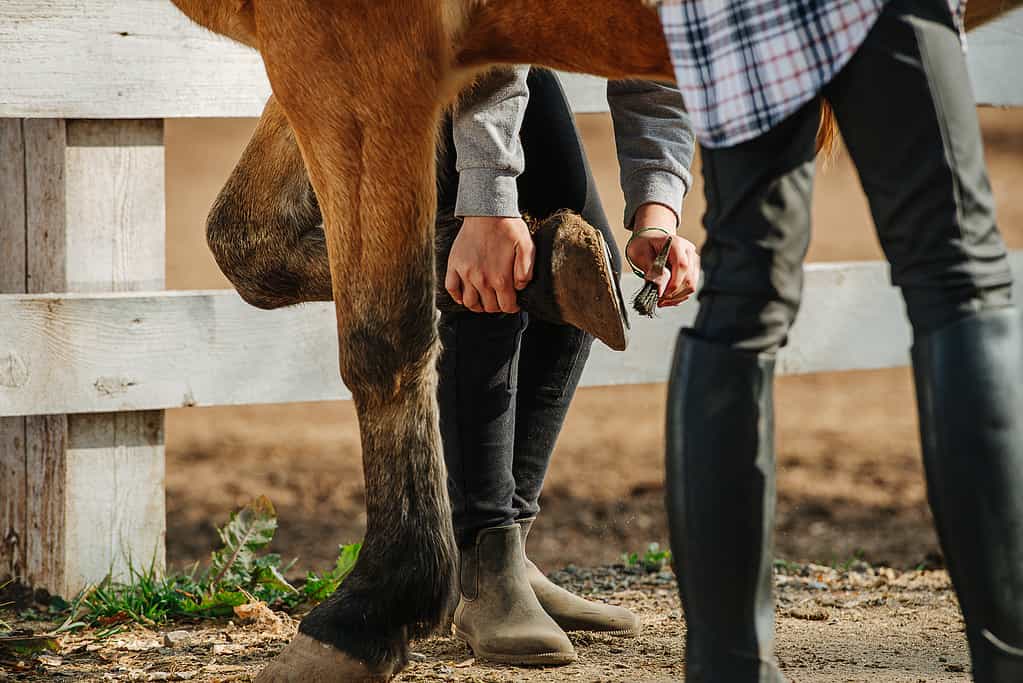
You can create positive associations with previously negatively perceived stimuli through counter-conditioning.
©KuznetsovDmitry/iStock via Getty Images
Stop Signals
Like start/consent cues, allow the animal to control the handler’s actions as much as possible. It’s essential to respect a stop signal whenever possible. If not, you will break trust and set back cooperative care goals.
What is Cooperative Care: How to Get Started
It’s essential to move at the comfort level of your pet. There are no set timelines for how fast each step may move. It will depend entirely on your pet’s comfort and how slow, comfortable, and easy to understand you make each step.
Chin Rests
Chin rests are a precious position to teach your cat or dog during cooperative care. This position is both a start cue and a comfortable position that your pet can hold during many husbandry procedures such as nail trimmings, ear cleaning, and brushing. If your pet removes their head from the chin rest position, this is a sign to pause the husbandry activity. To start teaching a chin rest, you will first use positive reinforcement to shape the behavior. Eventually, however, you’ll use chin rests less as a trained cue and more to ask your pet if they’re ready for a husbandry procedure. Depending on the procedure, you can use your lap, a cushion, an open palm, etc., for the chin rest.
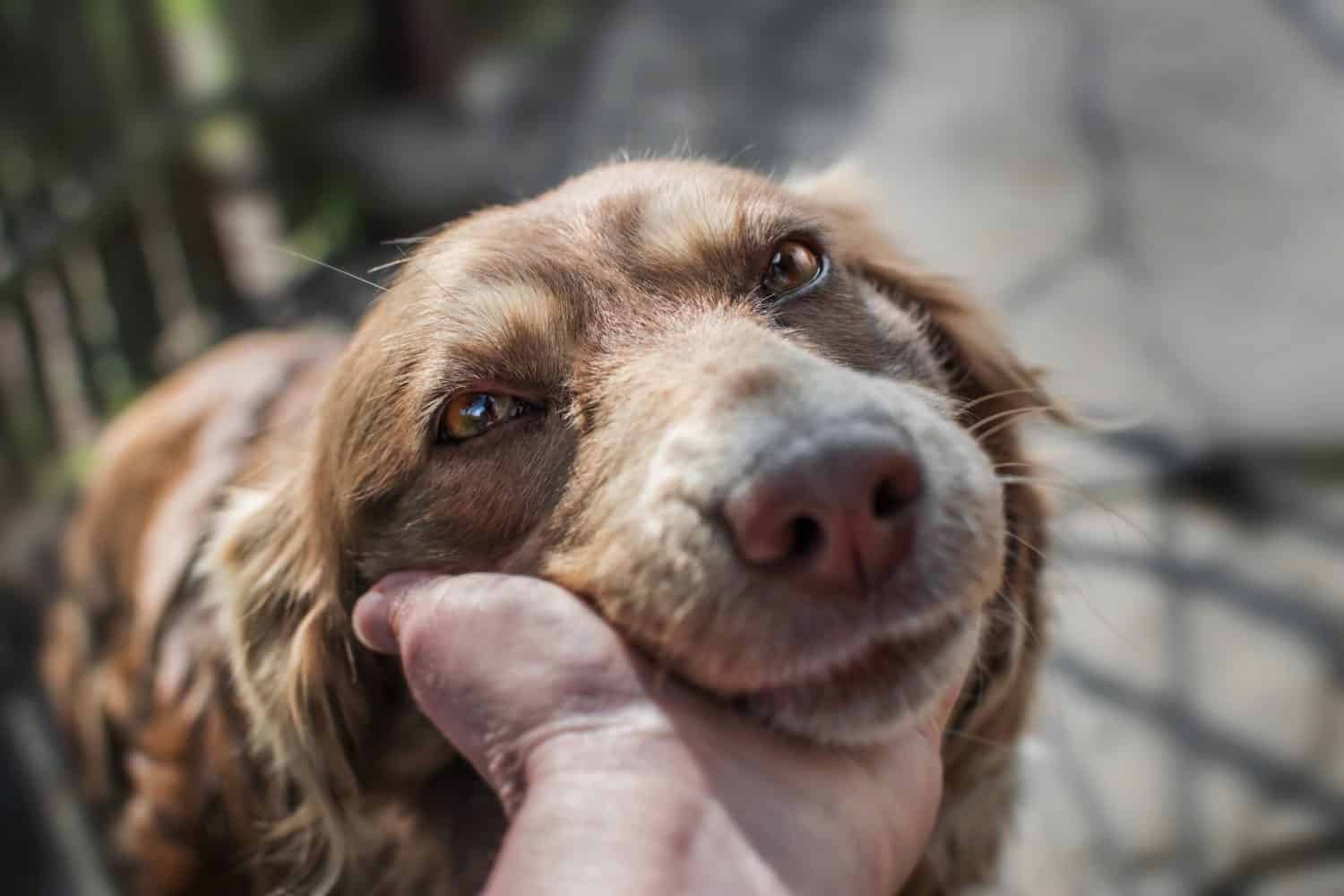
The chin rest is one of the core positions for cooperative care work.
©Tanya Kalian/Shutterstock.com
Step-By-Step
Most people start teaching this behavior with an open palm and then transition the cue to another surface. You can use the following steps to prepare your pet for this position:
- Present your palm just barely under your pet’s chin.
- When your pet contacts your palm, mark the behavior with a clicker or by saying “yes.” Then, immediately deliver a treat.
- Slowly increase the duration of contact with your palm by fractions of a second before delivering the treat. Very slowly build up the time of the chin rest in between treat deliveries.
- Transition to another surface, such as a cushion, by putting your open palm on the pillow. Eventually, you’ll remove your palm and cue your pet to rest their head on the pillow. This is useful for procedures, such as nail trimming, in which you need both hands.
Eventually, you will pair your open palm or the presentation of the chin rest cushion with the start of a husbandry procedure, such as coat brushing or nail trimming. You’ll want to reinforce the chin rest by always providing treats throughout the duration. Your pet will know that a chin rest equals consistent treats. They will also begin to associate it with the start of a procedure. If they are comfortable with the procedure to do the chin rest and accept the treats, they will put their head in the position. If they don’t put their head in the chin rest position, this is a sign that your pet is likely fearful or uncomfortable with the anticipated procedure. At that point, you need to develop more comfort with the procedure.
What is Cooperative Care: Implementing Counter Conditioning
If your pet is uncomfortable with a husbandry practice, use counter conditioning and slow, gentle desensitization to the tools and handling. To begin this process with nail trimming, you’ll want to follow two steps: one for handling and one for comfort with the trimming tool. Remember, there’s no set timeline for how long each step may need to be repeated before your dog is comfortable moving to the next one.
What is Cooperative Care: Achieving Comfort With Handling During Nail Trimming
- Initially, you’ll want to help your dog feel comfortable with having their feet touched, which can be difficult for many pups. Start by moving your hand near their feet and delivering treats. Only move your hand as close as they are comfortable with. As you pair this motion with the treats, they should increase their tolerance level.
- Work up to very briefly touching a paw and immediately giving treats. You may need to repeat this step many times before moving on.
- Next, increase the duration of time that you can hold contact with their paw before delivering a treat.
- Then, work on holding the foot very briefly. If your dog pulls their foot away at any point, move back a step.
- Slowly increase the duration you can hold the foot before delivering a treat.
- Next, work on touching the nails, delivering treats, and increasing the duration of time.
- Work on separating their toes and holding each toe individually while touching their nail. Again, move at the comfort level of your dog. This may take many sessions before your dog is comfortable with this level of handling. You need to use treats that your dog highly values—the more complex the task, the higher value treats you need to use.
- Finally, work on squeezing each nail to imitate pressure from a trimmer while providing treats after each nail squeeze. If you have taught a chin rest, you can use this to position to assess your dog’s comfort with each step of the process.
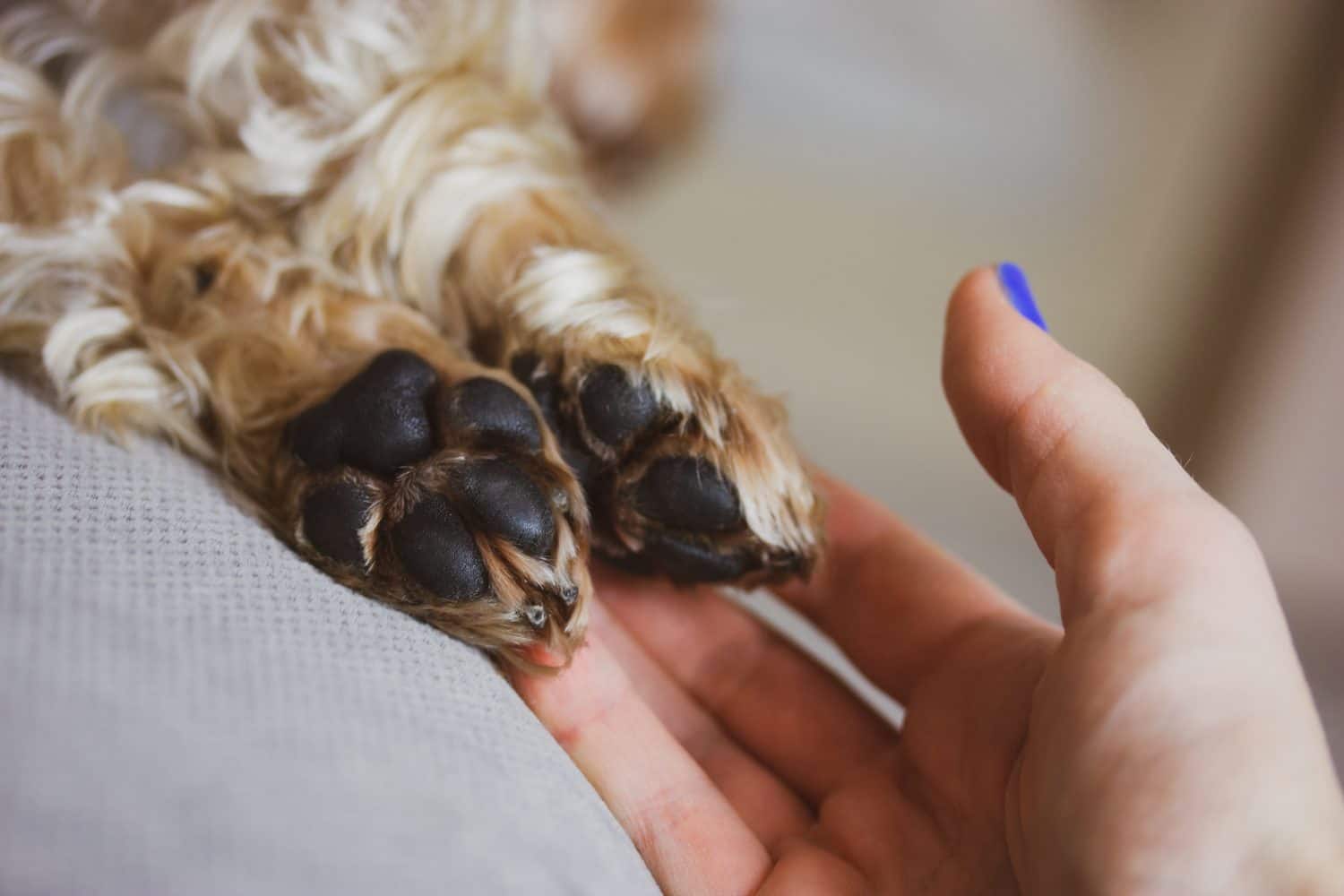
Before introducing the trimming tools, your dog should be comfortable with you handling their feet and squeezing their nails.
©Al More/Shutterstock.com
What is Cooperative Care: Achieving Comfort With Trimming Tools
The next phase of this process is to achieve comfort/active tolerance with the sight and feel of the nail trimmers. For particularly sensitive dogs, you may need a helper who can initially display the tool across the room while you immediately deliver treats to your dog.
Step-By-Step
- Show the trimming tool at a comfortable distance for a couple of seconds while delivering high-value treats.
- Once the trimmers are out of sight stop delivering treats.
- Present the trimmers again after a couple of seconds. Then, deliver treats for a few seconds before bringing them out of sight again.
- Repeat steps 1-3 until your dog appears enthusiastic to see the trimmers and is happily taking treats.
- Next, bring the trimmers a bit closer while delivering treats. If at any point your dog becomes tense, stops eating treats, and shows other signs of stress you’ll need to back off and work in smaller increments.
- Continue the process of bringing the trimmers closer until you can touch your dog’s foot with them. This should happen without your pup pulling their foot away. This may take many small, incremental steps to achieve with lots of high-value treat delivery.
- Then, work on touching the trimmer to the nail. Remember, if you are using a chin rest you should also be treating for holding the position. If they remove their head from the position, remember that this is your signal to pause and maybe move back down a step.
- Next, move to gently squeezing each nail with the trimmer. If your dog is comfortable, you can take a bit of material off. Remember to provide high-value treats for each nail.
- Finally, you should reach the point where you can trim the nails, providing a treat for each nail clipped. If they start pulling their paw away or remove their head from the chin rest position, immediately pause and assess.
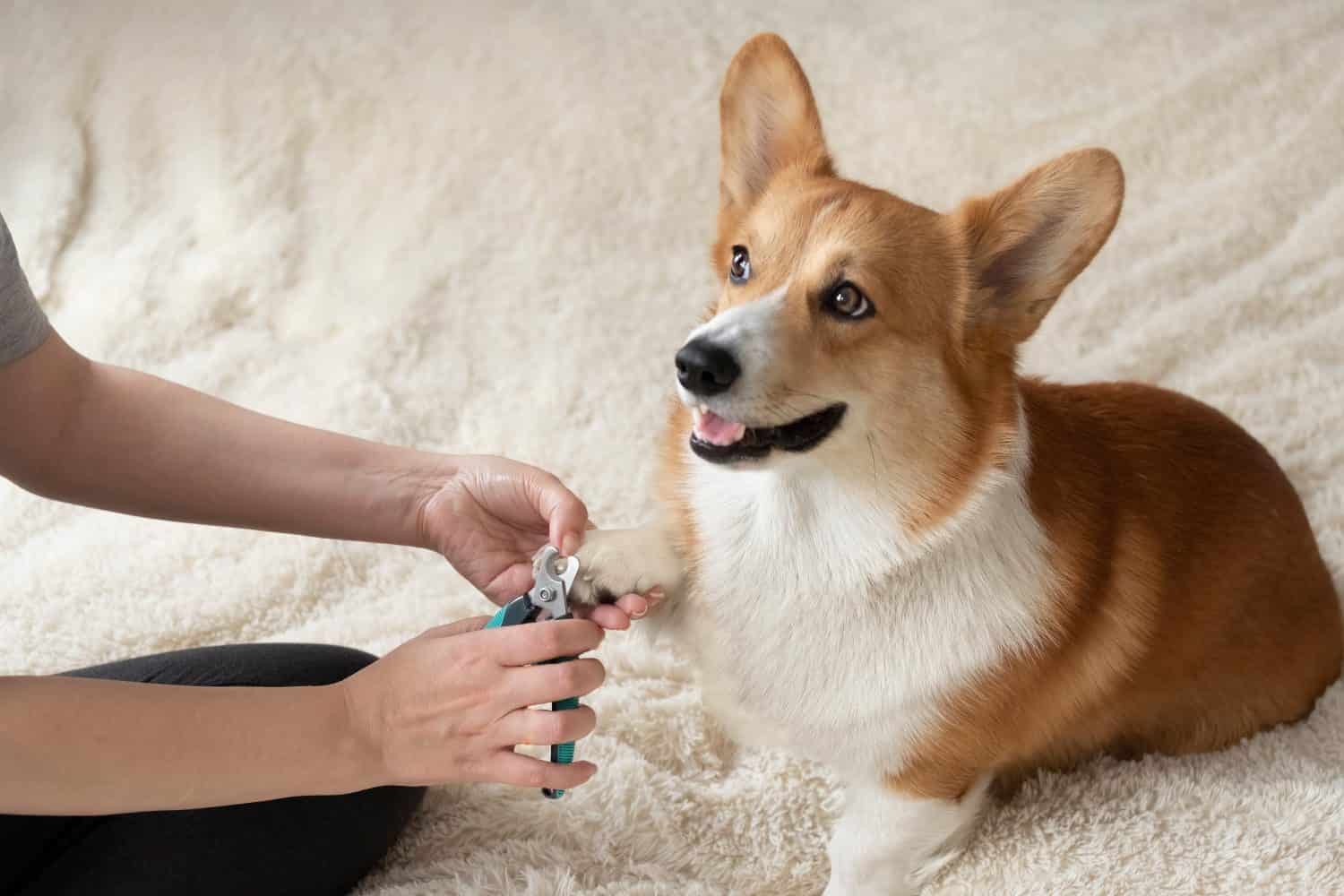
By using cooperative care practices, nail trimming can be a smooth process for both guardian and pet.
©Lana Kray/Shutterstock.com
An excellent resource for continuing to understand the practices and principles of cooperative care husbandry is the book Cooperative Care: Seven Steps to Stress-Free Husbandry, written by expert Dr. Deborah Jones.
The photo featured at the top of this post is © OlgaOvcharenko/Shutterstock.com
Thank you for reading! Have some feedback for us? Contact the AZ Animals editorial team.







